
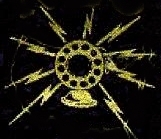

 |
||||
 |
||||
 |
||||
 |
|||||||||
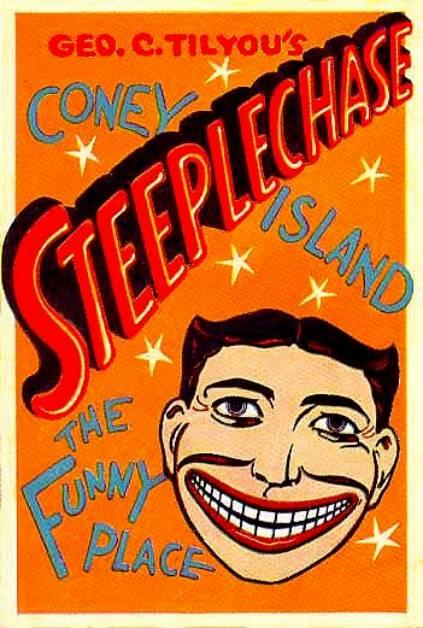 |
|||||||||
|
Perhaps Coney Island’s Greatest Showman was George Tilyou. When George was 20 years old, he and his father Peter built Coney Island’s first theater: Tilyou’s Surf Theater. George attracted top-notch vaudeville performers to his stage. To help provide safe passage for his audiences through the Brooklyn streets lined with saloons, clam bars and bathhouses, George constructed the Ocean View Walk out of wood planks in 1892. The Walk became known as The Bowery. |
|||||||||
|
The Bowery was the heart and soul of Coney Island. It became a screaming fairyland of freaks and fortunetellers. There was always some kind of magic being performed with smoke and mirrors, all disguised by the pandemonium and ballyhoo of sound and confusion. It was a city within a city, with 500 enterprising entrepreneurs, built of dreams where city folks could put aside their cares and play as children play. In 1894, George Tilyou erected Coney’s first Ferris Wheel. Over the next couple of years, Tilyou added an Aerial Slide, an imported Bicycle Railroad and the Double Dip Chutes. Consolidating all of his rides together on the Bowery, Tilyou opened Steeplechase Park in 1897. His main attraction was the simulated Steeplechase Horses. It featured an 1100-foot curved metal racetrack with double-saddled wooden horses on wheels and it operated on gravity. Attendants were dressed as jockeys and buglers and he added realistic touches such as hurdles and a streambed. |
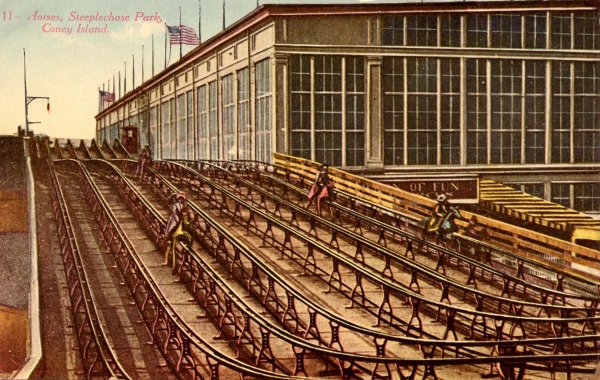 |
||||||||
|
Steeplechase Horses |
||||||||
|
In 1901, Tilyou added “A Trip to the Moon”, which became very popular, as well as a number of other unique rides that encouraged flirtation and featured new and inventive ways to entertain his paying customers. Over the next couple of years George Tilyou would see competition from first Luna Park and then Dreamland’s more expensive and spectacular attractions. Even though Steeplechase’s attractions were slightly more low class and vulgar than those of the competition, the public was still eager to gobble it up. They could purchase a combo ticket and experience 25 attractions for 25 cents. |
||||||||
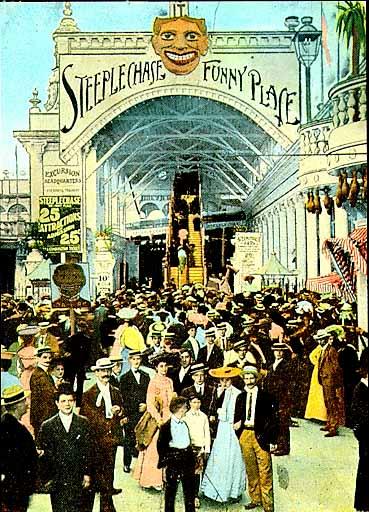 |
||||||||
|
Steeplechase entrance on the Bowery in 1908. |
||||||||
|
The trademark logo of Steeplechase, the Funny Face with the frightful grin and its 44 teeth (12 more than normal) set the tone for the park’s attractions. It was a grotesque, diabolical jester that provoked fun and hilarity from the park’s visitors. Unfortunately, fire was still a big problem for Coney Island and in 1907, Tilyou nearly lost his entire park to a fire. A carelessly tossed cigarette into the wastebasket at the Cave of the Winds ignited a fire that wasn’t discovered until 4:00 am by a night watchman. George Tilyou rebuilt Steeplechase and it sustained a number of smaller fires that were so common to large public buildings. Steeplechase continued to entertain the masses for 57 more years. |
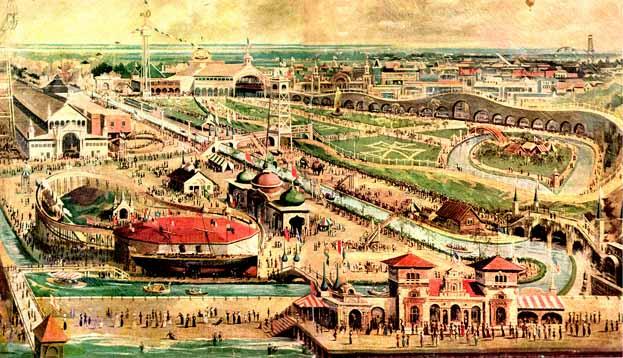 |
|||||||||||||||||||
|
Birdseye view of Steeplechase Park in 1903. |
|||||||||||||||||||
 |
|||||||||||||||||||
|
A rebuilt entrance to Steeplechase on the Bowery. |
|||||||||||||||||||
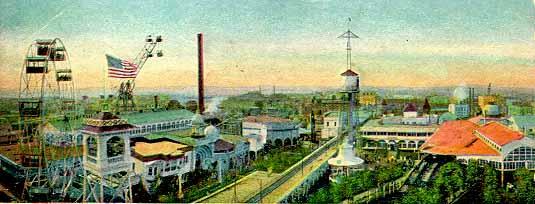 |
|||||||||||||||||||
|
This view shows Steeplechase from the Airship Tower in 1905. |
|||||||||||||||||||
 |
|||||||||||||||||||
|
Steeplechase’s Airship Tower with the Pier and the Track in the background in 1905. |
|||||||||||||||||||
 |
|||||||||||||||||||
|
With the combo ticket, you could pay 25 cents to ride 25 attractions. |
|||||||||||||||||||
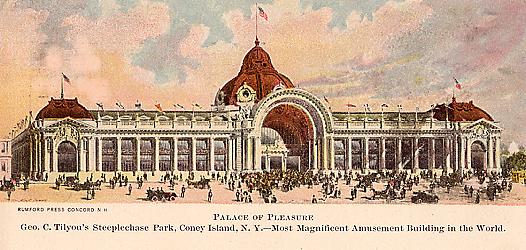 |
|||||||||||||||||||
|
Steeplechase Park’s Palace of Pleasure. |
|||||||||||||||||||
|
Steeplechase Park operated until 1964 when Coney Island experienced the worst season in a quarter of a century. Concessionaires reported that fear and not business taken away by the World’s Fair, also in New York City, was the reason for the decline. Another reason was the bad weather. They said park visitors feared gangs and the unsafe subways. Steeplechase Park closed permanently on September 20, 1964. |
|
|
|
|||||||||||||||||||||||||||||||||
 |
|
|
|
|||||||||||||||||||||||||||||||||||||
|
Last updated 7-17-17 |
|
copyright © 2017 PdxHistory.com |